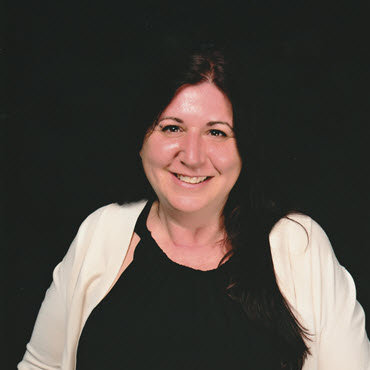
Patients with a rare disease are frequently regarded as highly engaged, especially in the digital age.
In this day and age, for better or worse, many of us are masters at “self-diagnosis” through online research. It’s really easy to just Google a symptom and follow it down the rabbit hole (usually to something terrifying—like the time I was sure the ringing in my ears was a rare brain tumor). At the same time, the wealth of information you can find online offers the opportunity to supplement the information you receive from your doctor if you are diagnosed with a condition. But once a patient gets that diagnosis, how far down the rabbit hole do they continue to go? And how does the knowledge that a patient accumulates impact their journey with the disease?
Conventional wisdom in the rare disease space is that these patients are more engaged than others—but is this always the case?
In reality, patient engagement with rare disease is a bell curve.
The Orphan Drug Act of 1983 defines a rare disease as a “condition that affects fewer than 200,000 people.” There are currently as many as 8,000 rare diseases identified, which means that, many times, if there is no family history of the disease (as many have a genetic component) when patients receive a diagnosis, it is the first time they have ever heard of the condition. For more information on rare diseases, see Beth Thompson’s blog on Rare Disease Day.
We consistently hear similar stories from the rare disease patients we interview—while their healthcare providers (HCPs) spend as much time as they can trying to provide enough information, patients invariably go online to try to learn more—and with a wide range of results. Because, finding information on a rare disease is often harder than finding details on something common like diabetes or even rheumatoid arthritis, and in some cases, treating physicians may not even be up to speed because they have never seen or treated the condition.
When rare disease patients strike out looking for information on their own, sometimes they luck out and find patient advocacy groups like the Hereditary Angioedema Association (HAEA), where hereditary angioedema (HAE) patients find resources and a community of people “in the same boat.” But other times, rare disease patients are faced with more dire news—I remember talking to a patient with atypical hemolytic uremic syndrome (aHUS), who told me how she stopped reading online after seeing a really scary mortality rate for the disease and never went back (luckily, the info she read was outdated). In addition, patients and caregivers may find themselves overwhelmed by the heavy clinical language they find when searching online—as “patient friendly” materials do not always exist in rare diseases.
In other cases, patients don’t feel a real connection with their disease. Perhaps the disease is something that isn’t noticeable on a daily basis, or once treated has minimal morbidity or mortality so it is something patients treat and don’t think about. So, even if information abounds, patients may not spend time looking for it—nevermind spending time reading it or learning from it.
In general, patient engagement with their health and medication conditions is a bell curve—there are those who are hyper-involved and those who are not involved at all, with most landing in the middle.
Typical recruiting can bias respondent selection toward the high-engagement area of the bell curve.
While it often seems like the engagement of the rare disease patients we speak to skews toward higher involvement, I often wonder how much of that is biased by the very nature of market research and the recruitment methodologies that are often used to find these rare disease patients. The patients who are easily found are often by nature those who are more engaged. But how different are the views of those in the middle or low end of the engagement curve? Even those who are highly involved in rare disease patient communities feel a sense of isolation due to being “different”—how much more magnified is that feeling if a rare disease patient is not involved?
Taking the time and effort to recruit across the patient engagement spectrum helps brands connect authentically with their rare disease population.
That’s why it is important to capture those “quieter” voices and that our qualitative research reflects these patients’ experiences—because sometimes they are very different from what we hear from active patients who self-advocate. I remember speaking with a patient who had primary immunodeficiency who was on what was clearly NOT a good regimen for her, but she had no idea there were other choices—she was just doing what her doctor told her to do. And hearing those experiences really brought to life the opportunities that existed for the client’s products (as they offer a product that could have addressed the patient’s complaints about her original therapy).
Our health research shapes the future trajectories of product development and patient education for our clients. If we are only hearing the voices of the engaged subset, we are not helping to create inclusive strategies, and could rather further alienate patients who are disengaged from their diagnosis. Taking care to recruit patients with diverse disease understanding and treatment engagement is beneficial for all parties involved in the research process.
How do we reach the quieter voices?
We have to get creative when it comes to recruiting rare disease patients. While it is important for any rare disease recruitment plan to include patient advocacy organizations and social media, using these methods alone is likely to miss patients who are currently NOT as involved. Use of specialty recruitment and health networks are critical to holistic recruitment of a rare disease sample—methods that add time and cost but yield returns in helping brands capture the hardest-to-reach patients.
As an example, when we included more diverse patients in a brand positioning research project for a rare disease product portfolio, we found that some of the “reasons to believe” were less believable simply because fewer engaged patients didn’t know enough about the category. While your brand might be “innovative” or you might be a “leader,” the claims are less credible if patients don’t know your history or product range. This enabled us to help steer the final positioning to one that was motivating to patients while avoiding skepticism.
At Escalent, we have a variety of tactics to find and connect with people when we don’t have the law of large numbers working in our favor. With our extensive experience engaging rare disease patients, we can help you create a more inclusive recruitment plan as well as help you manage stakeholder expectations and understanding of the ROI of investing in diverse recruitment. If you want to learn more about how we engage with rare disease patients, send us a note.









